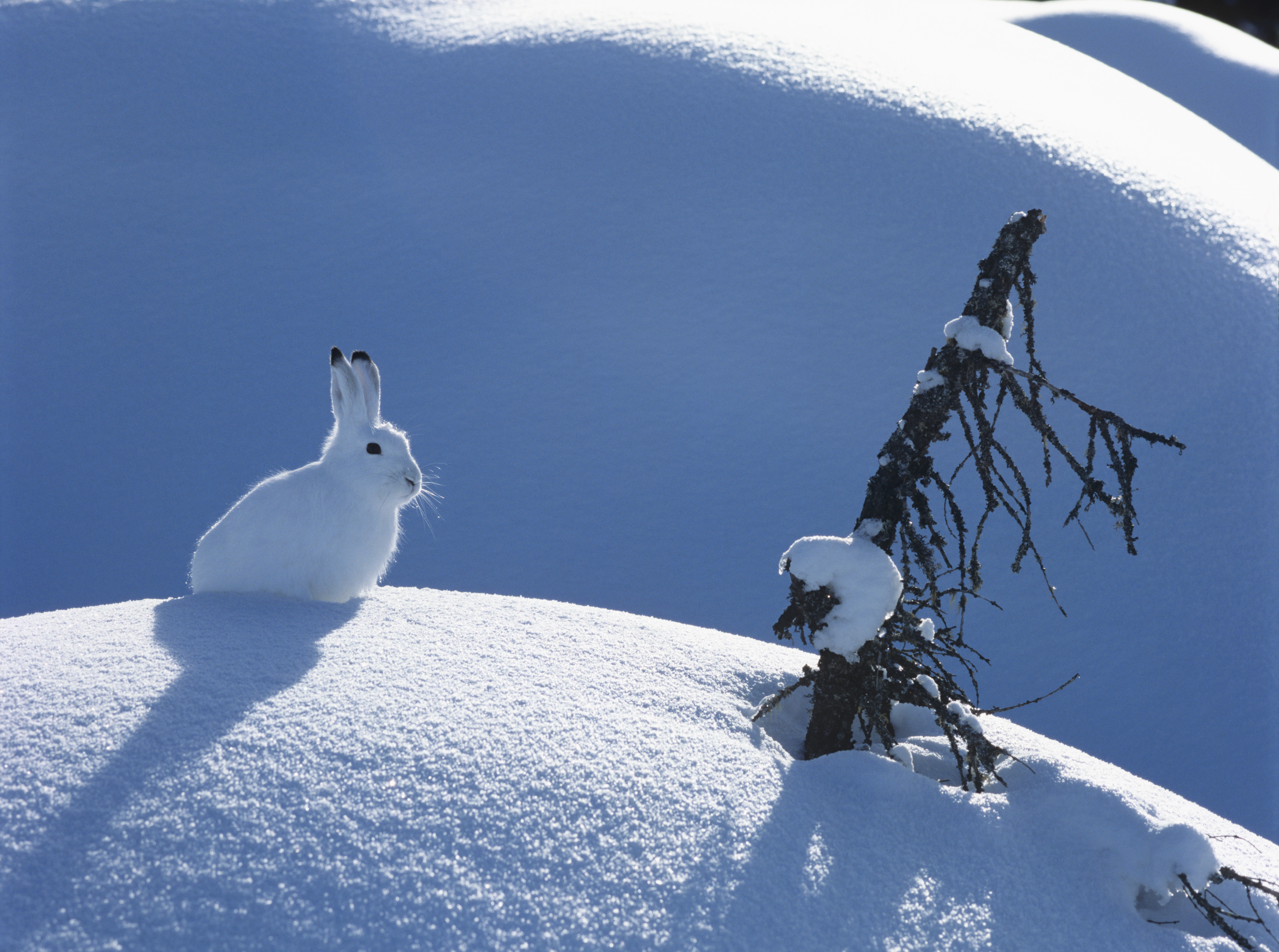Arctic hare is a large hare found in the treeless mountain and lowland areas from northern Alaska to Newfoundland and Greenland. Arctic hares have thick, white winter fur with black tips on the ears. During summer months, hares in the northern Arctic have a mostly white coat. However, those living in the south, where there is a longer snow-free season, have fur that is mostly brown or gray.

During the winter, Arctic hares gather in large groups in some regions. When resting, individuals tuck their front paws under their chest. This makes the group look like soft white rocks scattered under blowing white snow. Thick pads on the hind feet allow them to rest for hours on the cold snow. Claws on their front feet help them to dig through snow to feed on plants underneath.
Arctic hares usually measure 19 to 26 inches (48 to 66 centimeters) long. They weigh 7 to 12 pounds (3.2 to 5.4 kilograms). Females give birth to two to eight young during the spring or early summer. Arctic hares may live about five years.
When alarmed, Arctic hares stand up on their hind feet to survey their surroundings. Eyes on the side of their head allow hares to see in nearly all directions, even behind them. Arctic foxes and ermines may prey on young hares. Arctic wolves, gyrfalcons, and snowy owls prey on adult hares.
Inuit and other northern peoples commonly hunted the Arctic hare for food. Traditionally, hare skins were used to make children’s clothes and winter boot liners. The hind feet were used as cleaning brushes.
